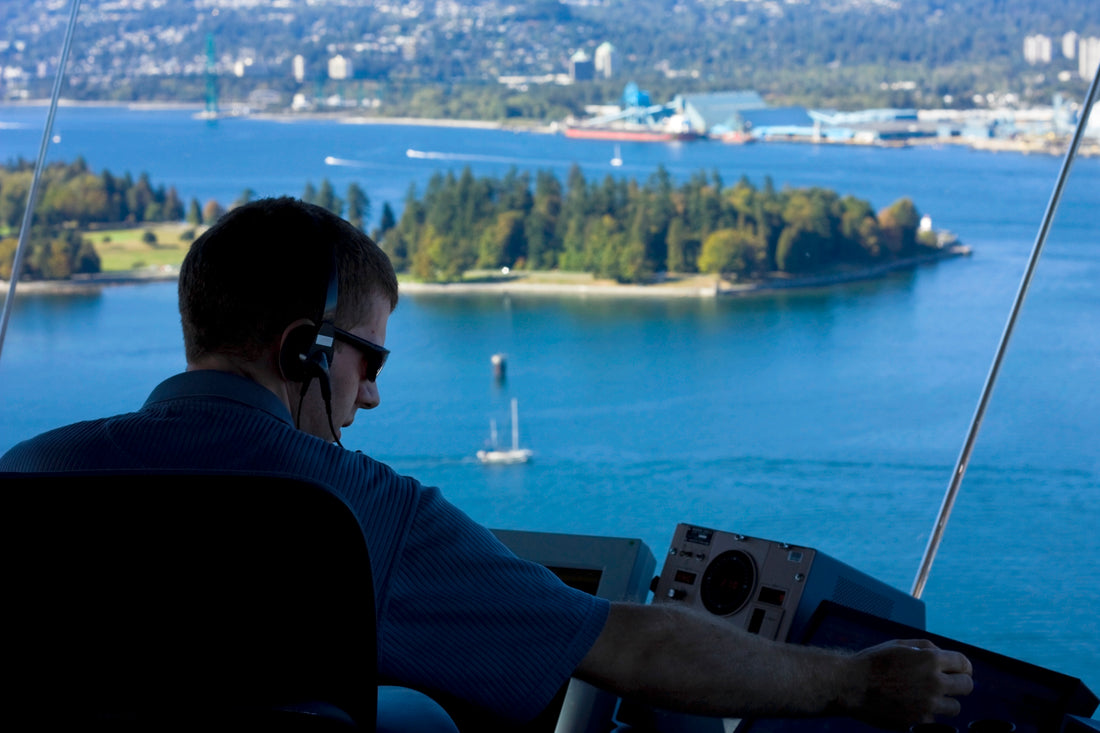
Port Control Operations = Marine ATC (or not?)
Dylan KemloThe duties and responsibilities of a Marine Vessel Traffic Control Operator (VTCO), could be compared with that of an Air Traffic Controller. Their primary focus is to ensure the safe passage of ships within the port or harbour environment. They work to avoid collisions or incidents, by managing movements from a port control centre where they also supply traffic information on frequency via two-way radio communications, as well as arrange for launches to take *Pilots out to vessels where required.
Making use of two-way radio communications, VTCO`s supply instructions on frequency to all shipping vessels while maintaining accurate logkeeping, as well as emergency watchkeeping, throughout the period of their watch. Just like an Aerodrome ATC, the VTCO conducts their duties from within a control tower located at a significant point on the harbour mouth from where they can have a good visual coverage of the vessel movements.
In addition to the above, the VTCO shall also supply traffic information to all vessels about weather and tidal conditions, the movements of other known vessels in the area, as well as berthing instructions. In short, the Port Control center is the preferred hub of communication for all operational, or potential emergency situations that may arise, in accordance with the published regulations.
With the rapid growth of global trade and maritime transportation, vessel traffic services (VTS) continues to play a critical role in guaranteeing maritime safety, facilitating traffic flow, and safeguarding the environment. VTCO is an integrated shore-side service provided by competent authorities that includes a variety of navigational assistance for vessels and extensive traffic control in a designated maritime area. These Operators collect information about the geographical area they monitor using a variety of sensors, including the use of a very-high-frequency (VHF) marine radio that supports two-way communication, while they monitor the movements of vessels in a VTS area.
When comparing the duties of a VTCO with that of an ATC, we notice that VTS operators also work in shift patterns, and have to cover irregular hours factored around a 24-hour cycle. Due to the number of vessels in the VTS area varying on a daily basis, the VTS operator must always be ready to adapt to new situations as they unfold. This requires them having to maintain intense concentration for lengthy periods of time and deal with any critical situations that may occur, on a professional level. Even though a Vessel does not move at the same speed as that of an Aircraft, the VTS Operator needs to remain pro-active throughout by applying separation techniques that safely maintain the minimum distance between all vessels on their watch. It therefore comes as no surprise that the VTCO is prone to experiencing fatigue in the same manner as that of an ATC carrying out their duties.
VTS operators operate in a state where a considerable burden is inherent in their work to ensure that all vessels they are in communication with can navigate safely. Their navigational assistance to vessels is an especially important service in difficult navigational or meteorological circumstances, or in the case of defects or deficiencies.
When you next see a vessel entering, or exiting a harbour, look around for a building close by that resembles an ATC tower, and imagine the amount of responsibility that those operators on duty inside that building are taking on, as they provide a service in support of safety at sea for all users on their active frequency.
Need to find out more about Port Control and Radio communications? Drop us an email via dylan@talkingradio.net
*Pilots - a mariner who manoeuvres ships through dangerous or congested waters, such as harbours or river mouths.